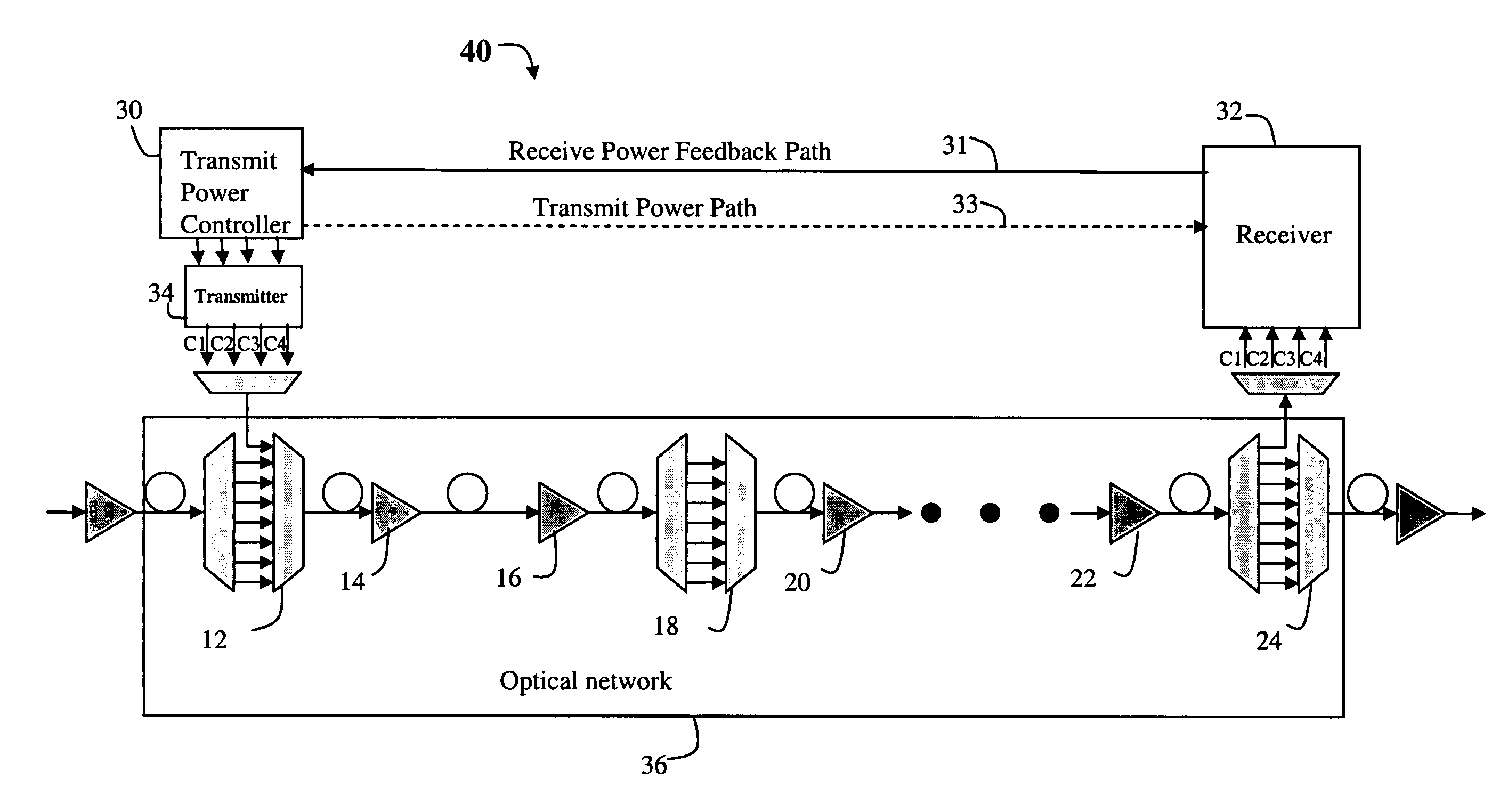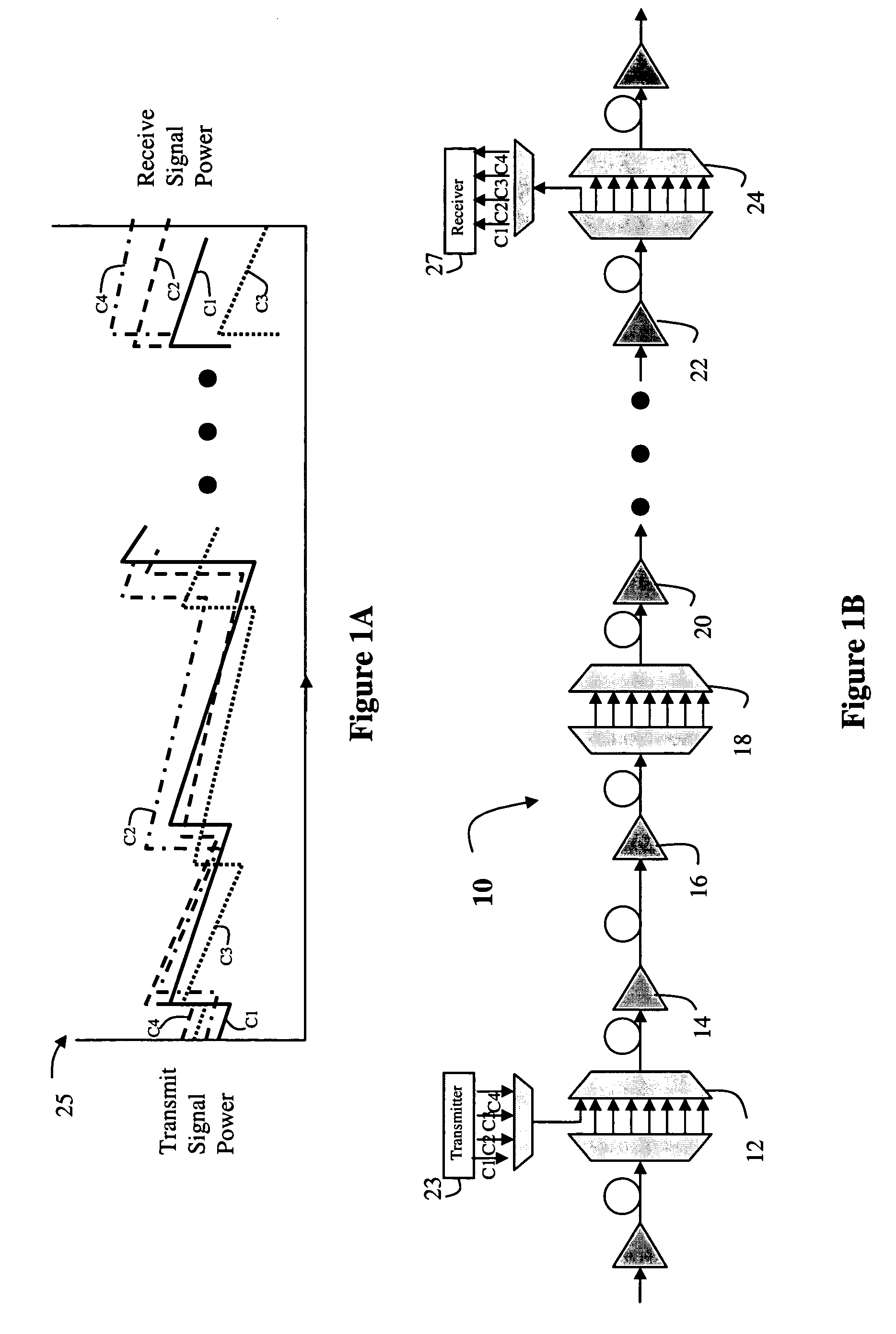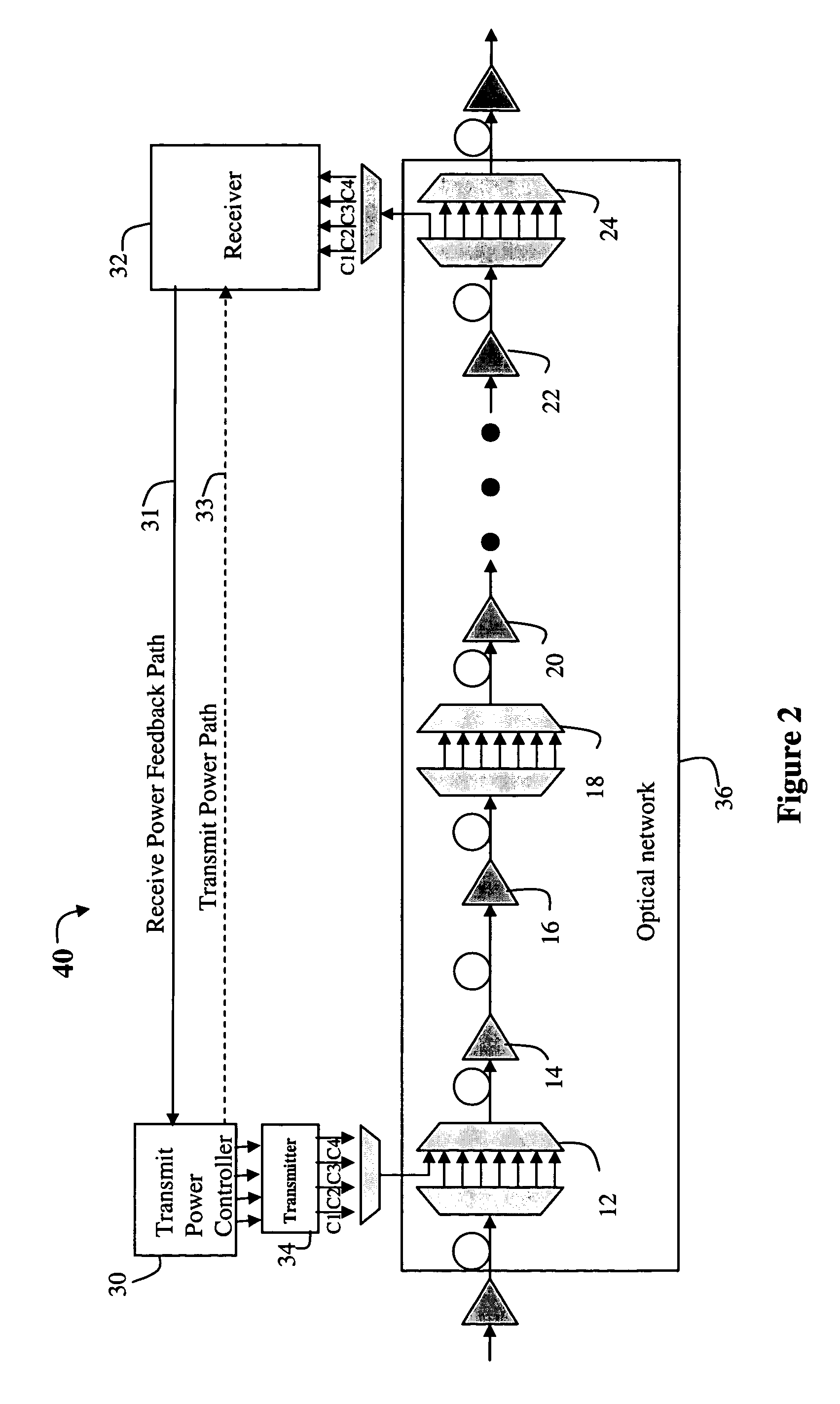Transmission power optimization apparatus and method
a technology of transmission power and optimization apparatus, applied in the field of optical communication, can solve the problems of link budge, degrade the osnr of a wavelength, and incur different amounts of noise, and achieve the effects of low cost, low cost, and reduced power deviation of received signals
- Summary
- Abstract
- Description
- Claims
- Application Information
AI Technical Summary
Benefits of technology
Problems solved by technology
Method used
Image
Examples
Embodiment Construction
[0015]Referring now to FIG. 1, a number of links are shown in an optical network 10. In one embodiment of the invention, the optical network is a Dense Wavelength Division Multiplex (DWDM) system, which combines and transmits multiple signals simultaneously at different wavelengths (or channels) on the same fiber, effectively transforming one fiber into multiple virtual fibers. However, as will become more apparent below, the present invention may be used in other optical networks, such as WDM networks etc., and the present invention is not limited to any particular type of optical network.
[0016]In general, the optical transport path includes a series of optical add drop multiplexers (OADMs) 12, 18 and 24 and other components such as amplifiers 14, 16, 20 and 22, or filters and the like. At various points in the optical path, the OADM is used to add new signals onto a given fiber. This feature is illustrated in FIG. 1B, where signals on channels C1, C2, C3 and C4 are transmitted for...
PUM
 Login to View More
Login to View More Abstract
Description
Claims
Application Information
 Login to View More
Login to View More - R&D
- Intellectual Property
- Life Sciences
- Materials
- Tech Scout
- Unparalleled Data Quality
- Higher Quality Content
- 60% Fewer Hallucinations
Browse by: Latest US Patents, China's latest patents, Technical Efficacy Thesaurus, Application Domain, Technology Topic, Popular Technical Reports.
© 2025 PatSnap. All rights reserved.Legal|Privacy policy|Modern Slavery Act Transparency Statement|Sitemap|About US| Contact US: help@patsnap.com



